Artist Series: Pelle Cass

Pelle Cass takes up to 5,000 pictures to finish just one. The Massachusetts-based photographer has developed a composite style in which he takes thousands of photos from a single spot and then edits figures from the photos into a single “still time-lapse.” He cuts and pastes for hours on Photoshop, but he never changes anything about the figures he selects. The resulting images are chaotic yet natural. Cass’s distinctive work has garnered attention from institutions in varied circles — from ESPN to SSENSE to Nike. He talked to FORM about humor, social media, and his artistic process.
FORM: How did you get into photography? Did you ever experiment with any other mediums or have any other passions before photography?
PC: Well, I got interested in photography when I was given a camera when I was 12 or 13. I wouldn't say that's how it started, but I liked clicking the shutter and fooling around with the camera. It was a few years before I thought I was really interested. My high school happened to have a really good photography teacher, and that's when it became something I started to identify as a real thing to do and not just goof around with.
As a kid and a teenager, even as a young adult, I had very poor pen skills. When I wrote, I would go through a layer of paper because I pressed so hard. My mother is an artist, so art and drawing were always around. I went to art school, so I certainly had to take drawing. Even though I was bad at it, drawing was the most helpful class I took. It was the only time I got a C in a class. In the late 80s, I started painting and drawing and writing poetry. Some of it is good, but not as good as my photography. But I learned a lot doing it. I think that people are always most proud of what they’re second best at.
FORM: When did you begin developing your distinctive composite style? What inspired it?
PC: In 2008, I started a different series of street photography called Selected People using the same technique. I was looking out the window, where it was just a quiet street, and I wondered what had happened there throughout the last day, the last year, throughout history.I imagined it filling up with people and animals and cars and birds and this and that until it was blacked over with activity. I think everyone has imagined that sort of thing, so I can’t claim any special insight. But the special thing was that I realized I could capture some of that with a camera. And that was really the moment. I usually don’t realize things all of a sudden, but that spring, I realized I could try it.
FORM: There are a few themes that consistently appear in your work. You’ve been shooting your Selected People series for over a decade, and your sports portfolio is similarly extensive. What about these themes and subjects are attractive to you?
PC: I’ve done a lot of other projects too, but the things that have gotten attention are Selected People and Crowded Fields, the sports pictures. I did a lot of other things that got local attention and once in a while some national attention, but these two series are what I’m known for. And I’m only recently generally well-known.
I was drawn to photographing people when I was in art school. Street photography was in the air with Robert Frank, Walker Evans, Garry Winogrand, and Lee Friedlander — that’s just what photography was. I would go out and take pictures of people looking weird on the street or something, and I was terrible at it. I didn’t like being out there exposed; making art to me was always private and introspective, not public. So I was always uncomfortable doing it. And most of the photography that I’ve done has been making things in the studio and photographing — somewhere between sculpture and painting and photography.
But I really wanted to do street photography in a different way — do it in a weird way or do it the wrong way. And that was really what inspired me to do it. By wrong, I mean do it in a way opposite from how other people have done it, in a way that might annoy people. People were annoyed when I first did Selected People. They would say that it’s not street photography, it’s just an illustration. These negative comments just reinforced that it was something worthy of reaction.
Also, people are fascinating on a more basic level. It's fun to see what people look like, to record them and pick out patterns. I noticed how men wear almost identical shorts, sunglasses and t-shirts. It's stuff that I couldn't observe well with my eyes. But going over thousands of photographs again and again, I'd start to see that all these guys are wearing sunglasses with necklaces. Isn't that funny?
After doing Selected People for so many years, I noticed that when a kid ran through it was interesting; it was better when people were active and moving around instead of just standing around talking. This trend led to my Crowded Fields series. In 2015, I got a commission to photograph the Atlanta Hawks because some magazine editors had seen my work. I'd done a few pictures of people running around on the playground playing football, so they had the idea that I should focus on sports. So in a way it was the editors’ idea. It really made me say, “This is going to be a sports photo — I'm not going to have the cheerleaders in it and I'm not going to have extraneous stuff; what I want is people moving around and people's bodies in motion.”
And then I realized that I can just show up at college games. Nobody cares about a guy with a tripod. It's not like professional sports or children's sports where they’d freak out about having a stranger around. So I was really excited. About three years ago, I started going to all the colleges around Boston. There are plenty of arenas, fields, and pools, so there’s a lot of variety in the same area. Once I realized that I had so many options there, Boston was my oyster.

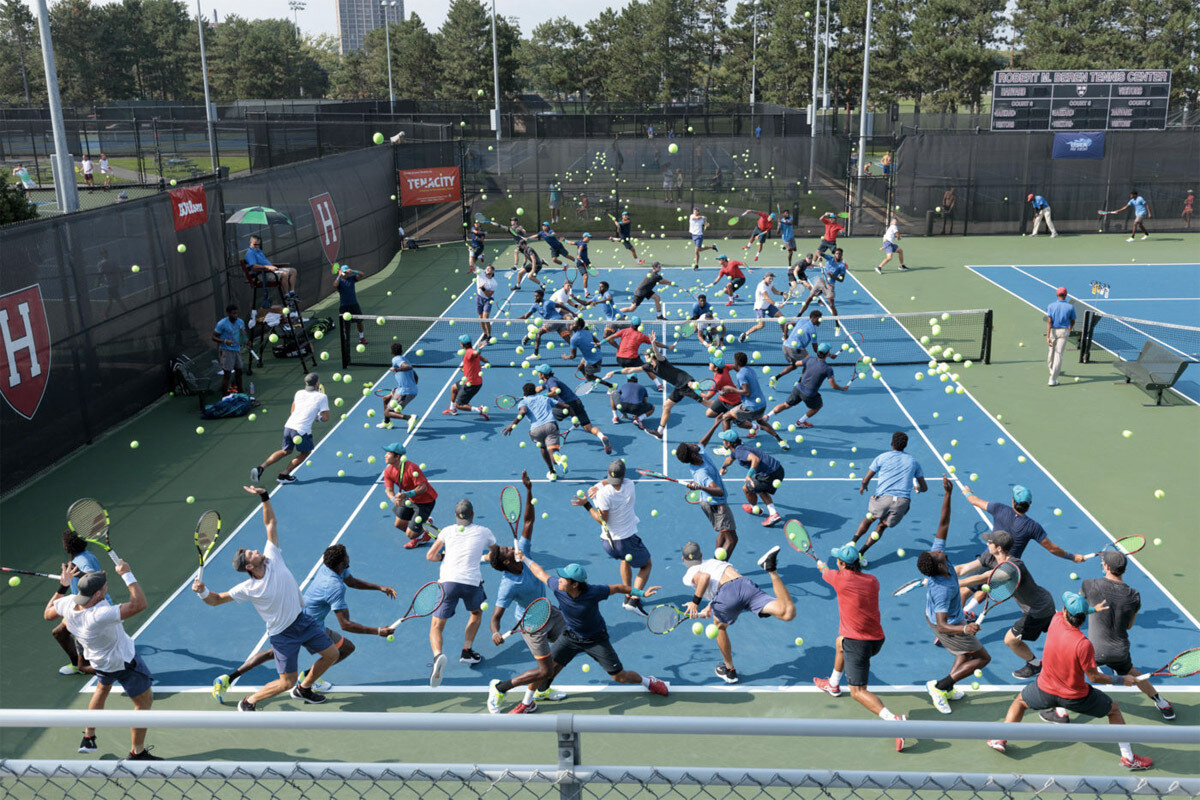
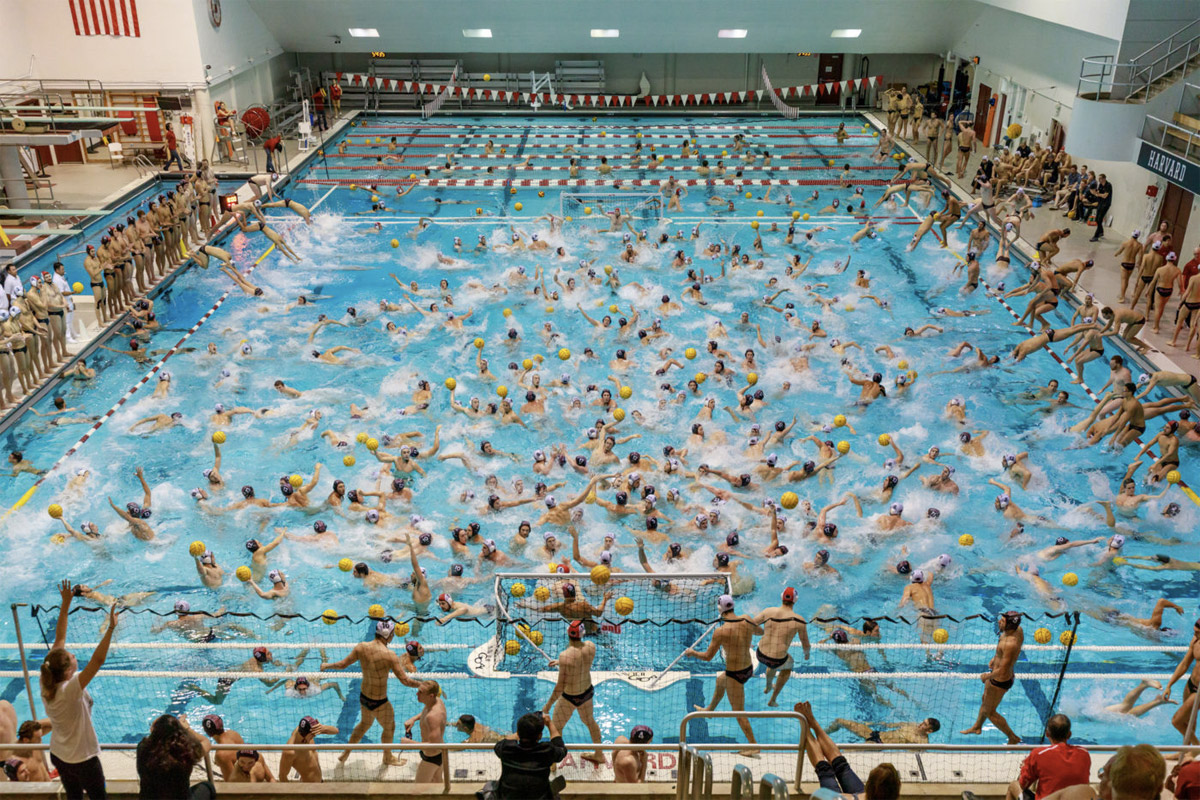
FORM: You’ve talked about the humor in your work. Why is that important and where do you see it in your photos?
PC: Humor in art is a sign of life. In other words, you could die of boredom from the seriousness of people’s ideas. When something's funny, it says that something is alive in the work. And it’s not just that it’s funny; it’s some spark of life that I value. I don't even know if I’m trying to be funny — it’s just a reflex. I rarely try to be funny, and I’m usually not that funny if I’m actually trying.
In my work, I'm always looking for the off-beat things that nobody else would notice, or things that surprised me. I think that's where the humor comes from — humor is in large part based on surprise, and I'm always looking for a surprise. So I may have 5,000 pictures to go through, and maybe 150 people in each picture, and I'm looking for the most surprising pose or action.
FORM: Your work involves looking through tens of thousands of photographs of people, animals and things. What are some things that you’ve noticed from these hours of observation that you didn’t notice before?
PC: When I got back from taking pictures of the Boston Public Garden, I noticed Randy Johnson was in the pictures. That's not that interesting, but I was surprised that this famous person walked by and I didn’t notice. So much happens. I think any student of photography has learned that so much happens in any one frame. The big surprise is how much happens in an hour.
People's facial expressions can be surprising. Sometimes athletes look ecstatic, and sometimes they look in the throes of effort. It's always surprising to see their feelings when they’re on the field. That's no surprise to any photojournalists because they're trying to cover the emotion of sports, but I'm not really trying to do that. I'm trying to cover the motion. And so the humanity that comes through is surprising.
FORM: Moving onto something perhaps less funny — could you tell me about the long, painstaking process of making each composite?
PC: For most of those photos, it starts with checking the sports calendars for the various colleges. I’ll research on the internet if it looks like a nice arena or field. Then I’ll walk around and try to find a good spot. I try not to look too much like a professional photographer walking and stomping around because sometimes that will cause the athletic director to question me.
For sports events, I'll take thousands of pictures — anywhere from 1,500 to 5,000. I’ll often shoot from the same spot and with the same settings so it’s consistent. I operate a bit like a normal photographer and just look for interesting things to happen even though I'm photographing a live view. I try to notice people walking across the field, helicopters going by, or birds or rabbits or squirrels, which most photojournalists wouldn't bother with. I try to make sure that I get as much extraneous stuff as I notice.
Then I get home with 5,000 pictures of an event, and it's a mess. I just start flipping through one at a time. If something looks lively, I'll put that in. And then I keep going until a pattern starts to emerge. It's confusing and laborious and I usually don't really feel like it's turning out well. But I go over the 5,000 pictures and add figures in. The way that I add figures, they’re always in their original spot — I don’t ever move anybody. Even when I finish a picture, I might not like it and start all over again and do an alternative version. I have spent a month on a single picture. Sometimes it might yield two or three pictures instead of just one.
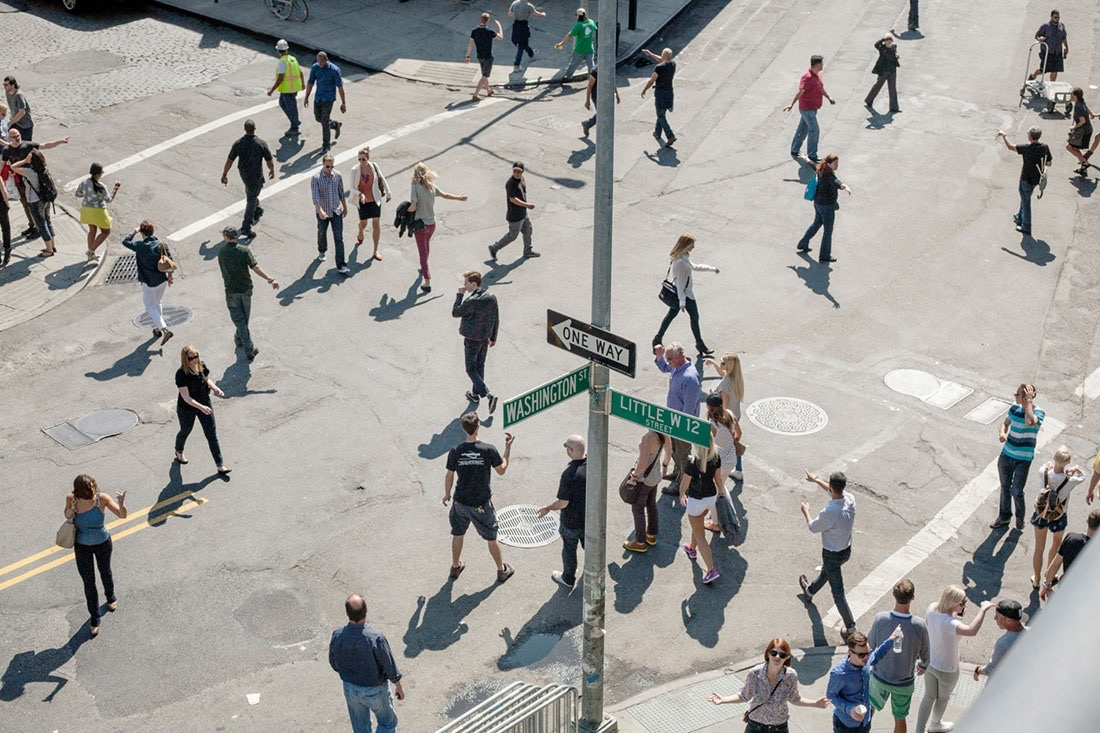
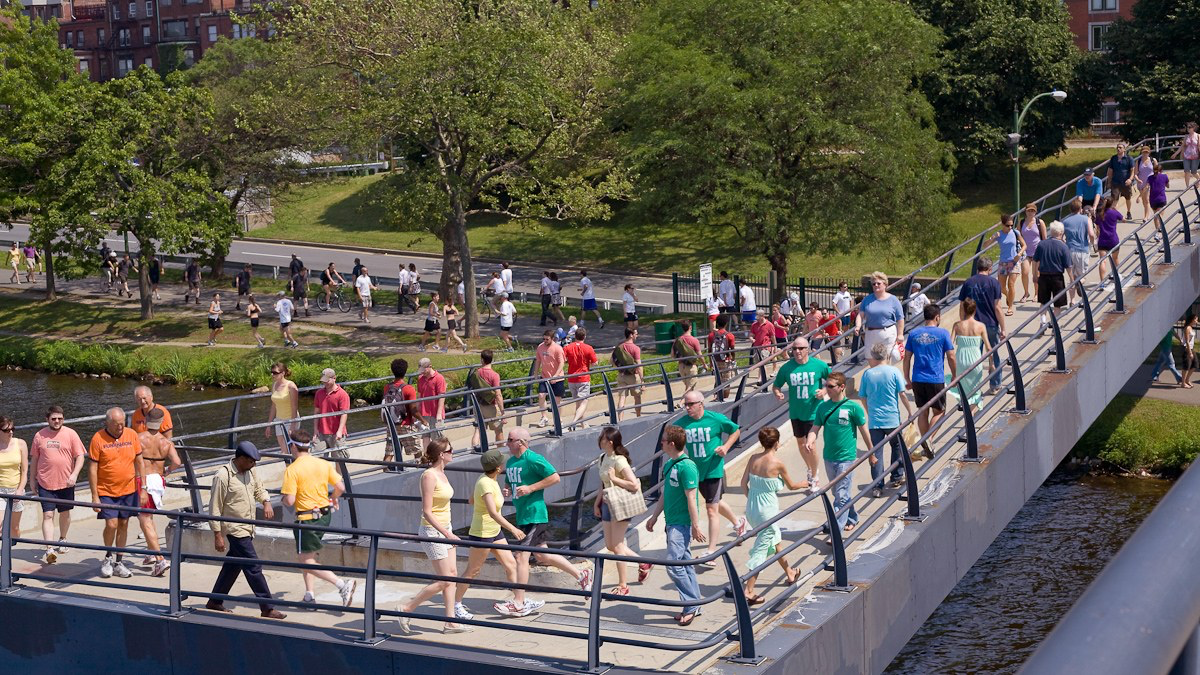
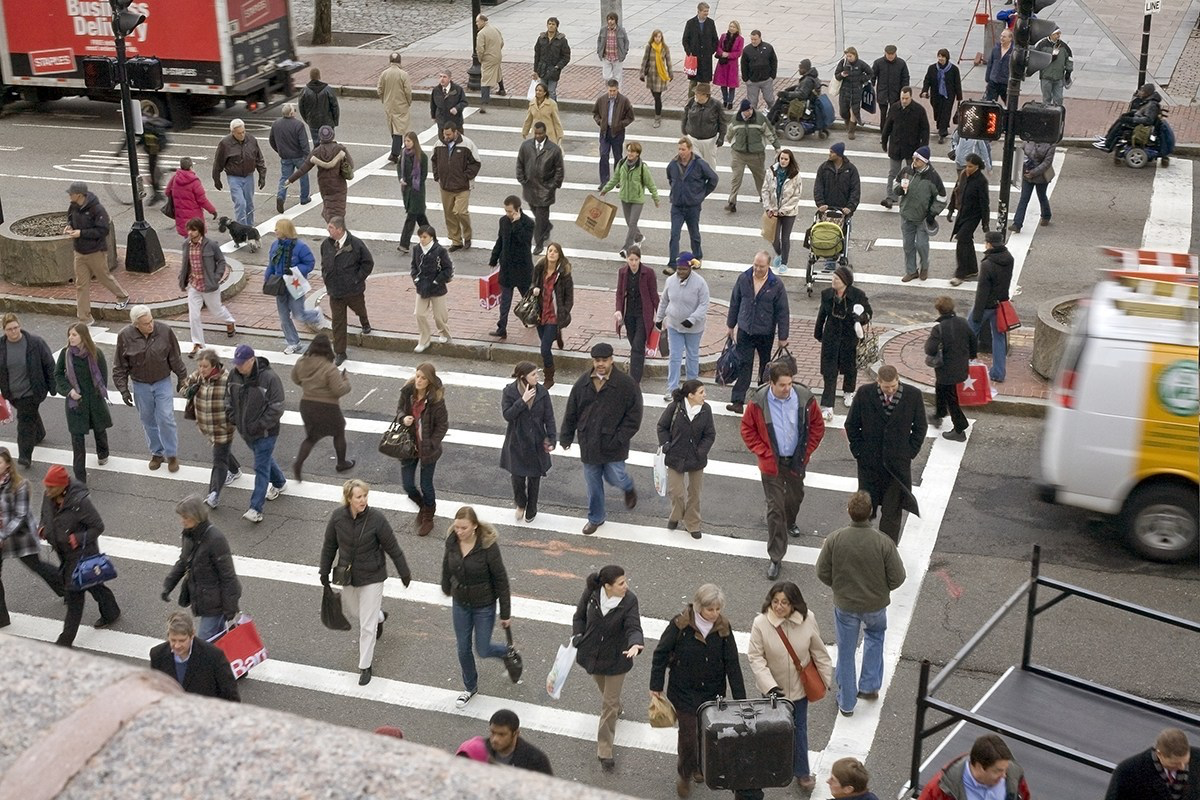
FORM: You’ve said that you “change nothing” when making your photos. You are, however, always adding and taking away. Why don’t you crop or otherwise distort your images?
PC: I guess that's part of what I was talking about earlier — my training in street photography. The rules of street photography don’t allow you to crop or alter the picture. The reason behind these rules makes sense: the photograph should convey as much truth as possible without outside intervention. That's a move I've tried to hold to. I think that with my photos — as much as they seem like strange novelties — it all happened in exactly the way and places you see it. It just happened over an hour, not an instant.
My pictures look different from other photographers who might do a lot of compositing. They look unnatural — I think my own work has a natural, chaotic look. There’s still this feeling of naturalism because people are in their real positions with the true background. I don’t change the light or anything at all. I like art that has a feeling of realism and naturalism.
FORM: Your work has entered a broad range of cultural spheres — from ESPN to SSENSE to Nike to Dartmouth’s alumni network — what about your work makes it accessible to so many different groups?
PC: Sports. I can finally give a one word answer. Sports are pretty universal. I think what makes people excited is this new approach to sports. I tried a new approach to street photography and people liked it, but with sports, there was just a different magnitude of interest.
FORM: How do you think social media has influenced your experience as an artist?
PC: There are two parts to it: how it has affected me and how it has influenced me. It has been a great help. I'm including my website and just being on the internet in general, not exclusively social media. It has made my career possible; I probably wouldn't have been able to disseminate this work through the old-fashioned method of showing it to galleries or publications in my neighborhood.
It has also influenced my work in a concrete way on Instagram — I want to make sure that I have some part of a picture that will look nice on a tiny screen. So when I'm actually compositing a picture, it encourages me to make sure it's super dense in some places, so that I have an area that I can crop. I don't like to publish whole photos and they don’t look that great on a tiny screen. I also want to keep photos to myself until I can fully publish them myself.
As far as enjoying social media, I present nothing personal. I just present the pictures.
